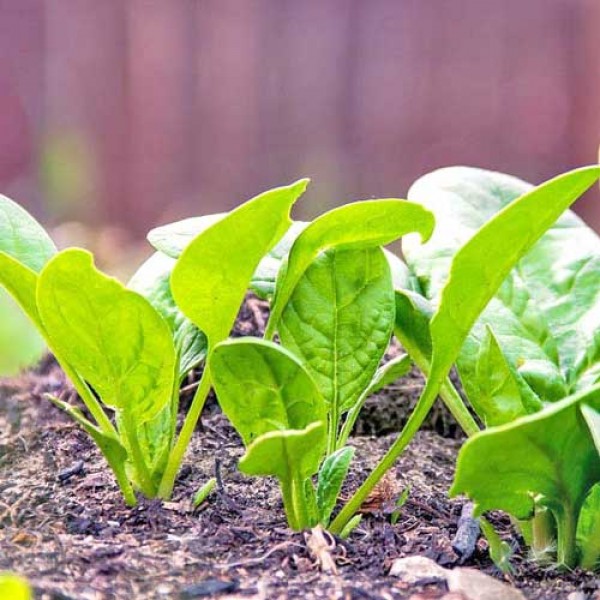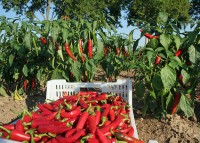
How to grow Spinach
Spinach - delicious, versatile and easy to grow
Even though spinach, which originated in Persia, was brought to Europe by the Moors in the 11th century, it was "Popeye the Sailor Man" who made spinach so popular. Every boy wished to be as strong as the hero from the cartoon series. And suddenly, the often despised spinach became the boys` favourite vegetable.
The good thing about spinach, however, is not only its popularity, but also its iron, magnesium, vitamin B content and its versatility. Fresh as a salad, on pizza, with pasta or in a vegetable stir-fry, spinach goes with almost everything.
Moreover, spinach is considered a great autumn and winter vegetable, as a second sowing can still take place until the beginning of October. However, if frost is reported, please protect your spinach additionally with fleece or straw, otherwise the young plants will die.
Location
Spinach thrives best in a bed of loosened soil that has been enriched with compost. As a low nutrient-demanding plant, it does not need any further fertilisation later on.
Depending on the variety, the location should be chosen appropriately.
The summer varieties (sowing March-May) prefer light shade.
The winter varieties (sowing September to mid-October) prefer the sun.
Cultivation in a greenhouse is only recommended for very early sowing, as spinach does not tolerate too much heat. Therefore, good ventilation should always be ensured in the greenhouse. Good neighbours for spinach in the bed are: Aubergines, beans, tomatoes or cucumbers or cabbage.
Sowing
Since spinach has deep roots, loosen the soil well to a depth of 30 cm before sowing. Then the spinach seeds can be sown directly into the prepared bed. To do this, place the seeds in the soil at a depth of 2-3 cm with a spacing of 3-4 cm. For an optimal yield, the rows should have a distance of 20-30cm.
After sowing, lightly press the soil over the seeds and keep it evenly moist. The seeds must not dry out!
The optimal germination temperature for spinach is between 10-20°C and the first sprouts can already be seen after 1-2 weeks. After 3 weeks, separate the spinach seedlings to a distance of 8-12 cm to achieve good growth and later a good harvest.
Care
Enrichment of the soil is always done before sowing with spinach. Do not fertilise after sowing as spinach belongs to the "weak feeders" and otherwise stores the nitrogen as nitrate in its leaves. Water the spinach regularly and preferably in the morning, as it wilts quickly in dry conditions. Regularly hoe the soil and pluck out any weeds that remain, as every weed takes valuable nutrients from the soil.
Protect against pests and diseases:
Protection from pests and diseases
Since spinach is extremely tasty, especially for slugs, put up slug fences or use slug rings to protect it. If planted in a greenhouse, spinach is prone to downy mildew, so make sure it is well ventilated and not too warm. If growing in a raised bed, choose a location that is not constantly exposed to the sun, as the soil in these beds tends to dry out quickly and the spinach wilts.Good neighbours are peas, bush beans and green beans, but you should not grow tomatoes, cucumbers and spinach in the direct vicinity of chard.
Chard is relatively resistant to diseases and pests. What can occur is leaf spot disease, which can be recognised by brown spots with red edges. This can be avoided if you grow chard in mixed culture with kale. If you discover the brown spots, remove the infested leaves and dispose of them in the household waste. If the plants are too dense and also in partial shade, downy mildew can spread and form a white coating on the underside of the leaves. Here too, remove the infested leaves.
Harvesting
The first leaves can be harvested after 6-8 weeks, preferably at midday or in the evening after a sunny day, as the plants then have the lowest nitrate content. The first tender leaves are excellent as a salad, the older plants can also be used for spinach vegetables or other purposes, there are no limits to what you can do. If you want to freeze the spinach, you should first wash and clean it, then blanch in boiling water for about 2 minutes. After drying for a short time, you can divide the spinach into appropriate portions and place in the freezer. However, only the fresh vegetables retain their full flavour and vitamins. When the spinach starts to blossom, it becomes bitter and inedible, then you should refrain from harvesting.














